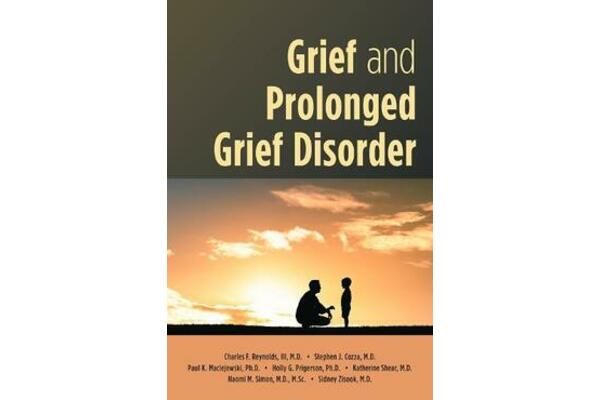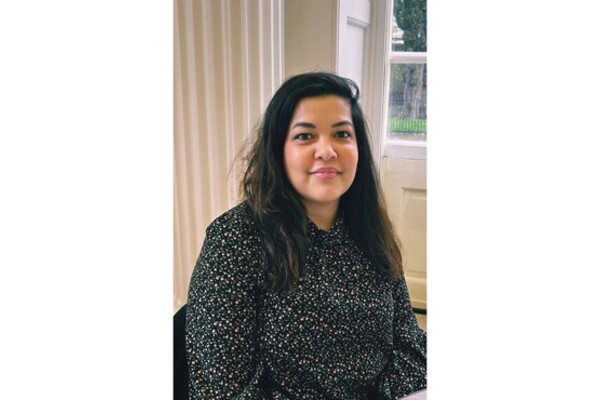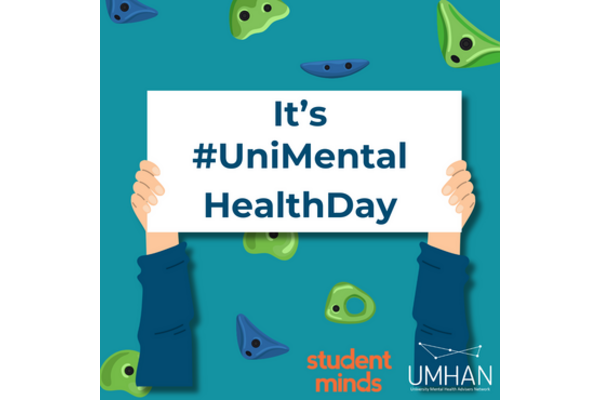UMHAN member Kate Owen reviews a recently published book on 'Grief and Prolonged Grief Disorder', and reflects on how to support students experiencing grief in her own work as a Mental Health Adviser.
Navigating the journey of grief
A review of ‘Grief and Prolonged Grief Disorder’, by Reynolds, Cozza, Maciejewski, Prigerson, Shear, Simon and Zisook
Bereavement and loss are universal, inevitable life experiences, with grieving typically a process of adapting to the loss and integrating reality without the loved one. I often keep in mind Tonkin’s (1996) image of grief, where grief itself doesn’t grow smaller over time, but where life grows around it. It reminds me of the growth lines around a knot in a piece of wood. Sometimes, the very normal experience of grief can become derailed; the bereaved person appears to be trapped within an intense, persistent grief. This type of grief has been referred to in various ways over time- as complicated, traumatic, chronic, atypical or stuck. Such ‘complicated’ grief has very recently been formally recognised in both the DSM-5 and ICD-11 as a specific diagnosis, Prolonged Grief Disorder. This book by Reynolds and colleagues is a timely handbook which aims to provide readers with an understanding of both ‘normal’ grief and Prolonged Grief Disorder (PGD).
The authors are all academic experts in their fields, and therefore the writing is primarily scholarly in style and approaches the topic from a medical model perspective, frequently writing about a ‘clinician’ working with ‘patients’. The text is enlivened by case studies which highlight the range of human experiences of grief and bereavement. The chapters lead the reader through the experiences of grief that are considered ‘normal’ and then move into considering the diagnosis and treatment of PGD.
Reynolds and colleagues discuss data that estimates that, for each death, around nine people, usually close friends and family, are significantly affected. They discuss how the impact of a loss can be both psychological and physical, with higher levels of inflammation and immune changes, and higher risk of cardiac problems. Following bereavement, there is also an elevated risk of suicide, particularly for those bereaved by suicide. They note that the effect of bereavement seems to be worsened when the death is unexpected, untimely or unnatural, which can be compounded by high visibility news coverage. Often the process of grieving involves different ways of coping, for example, accessing emotional support, venting, planning memorials, engaging with memories, avoidance of reminders,or self-blaming. According to Reynolds and colleagues, in ‘normal’ grief, a bereaved person is likely to use a variety of these coping strategies over time. Typically they are able to adapt to the loss and incorporate the loss of that significant person into their changed lives.
For most, grief is a normal and adaptive response to meaningful loss, and the authors emphasise that all bereaved people benefit from compassionate supportive care. The book offers straightforward guidance on how to respond to those we come across who are grieving, which can be reassuring for those moments when we might be at a loss for the ‘right’ language to offer appropriate support to someone in their grief. Reynolds and colleagues remind the reader that “when you don’t know what to do, be human”; there is much value in accepting another's' grief and bearing witness to their pain. They advise against offering platitudes (those ‘at least he lived a long life….’ type comments that, whilst well intentioned, can really miss the mark). Instead, they suggest responding with genuine warmth and interest, and inviting people to talk about their relationship with the deceased person.
When I began reading the book, I felt some ambivalence towards the labelling of more persistent grief as a “disorder”. I wondered whether this represented ‘medicalisation’ of something that is normal and human, particularly as it is frequently emphasised that there is no time limit on grief, and that every grief is different. However, the authors present rigorous evidence that some peoples’ grief is distinctively characterised by significant distress that is both debilitating and persistent. In PGD, intense grief and longing continue beyond 12 months since the bereavement, with a strong preoccupation with the loss and no relief or restoration of a life of meaning. Early grief coping mechanisms, such as avoidance and self-blame, continue to dominate the persons’ experience. The book presents research showing that this is distinctive from ‘usual’ grief, and can be distinguished from co-occurring or existing problems such as major depression or PTSD. A key message is that PGD warrants effective, psychotherapeutic treatment. Detailed in the book and illustrated through a case study, the authors have developed a 16-session therapy which promotes adaptation to loss and restores capacity for wellbeing.
I found this a thought-provoking book. As a mental health adviser, I frequently work with students who have been bereaved in a variety of circumstances. I have experienced my own recent losses, and have close friends who have been bereaved. Reynolds and colleagues’ prompted me to think more about how I can best respond when people talk about their loss and become more conscious of the ways in which grief can become derailed. I am more alert to how people cope with loss, and more confident in having conversations about grief. The book also challenged me to think in depth about the complexity of researching such a human, universal and yet individually unique and multi-faceted experience like grief, and determining when, what, how and why it might become problematic. Ultimately, it is reassuring to know that not only can we support someone compassionately through their grief but that there is hope for those whose grief has become problematic. Whether the journey through grief is ‘typical’ or ‘prolonged, those grieving can be helped to adapt to their loss and continue their lives.
Kate Owen
Grief and Prolonged Grief Disorder (2024) Edited by Charles F. Reynolds III, M.D., Stephen J. Cozza, M.D., Paul K. Maciejewski, Ph.D., Holly G. Prigerson, Ph.D., M. Katherine Shear, M.D., Naomi Simon, M.D., MSc, and Sidney Zisook, M.D.
Tonkin, L. (1996). Growing around grief – another way of looking at grief and recovery. Bereavement Care, 15(1), 10-10.









